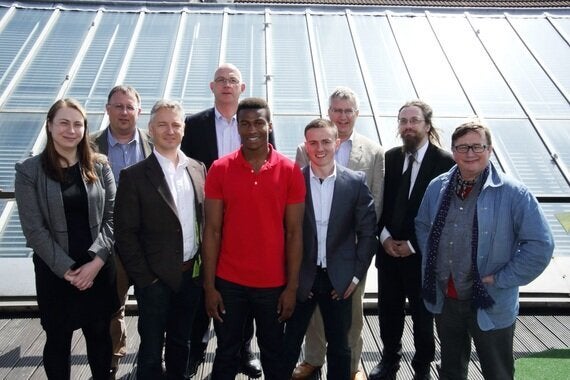Now that our Robotics mission is over, and my jet lag is finally retreating, it's time to reflect on the lessons from the trip. Along with the mission, it has been a significant week for the robotics industry in the U.K with the launch of the Robotics and Autonomous Systems (RAS) Strategy.
The visit to California reinforced my personal experience of working and living in the region. Effective business gets done, deals are struck, partnerships forged because the working ethos is one of openness, intrigue and a willingness to engage. The delegates on the mission experienced this first-hand. In five days we met formally with over twenty five organisations and many more through informal networking events. Over the week I can't recall a single discussion where our US hosts were overly protective of plans or key learnings. People recognised that to build the robotics market, the more enabled organisations are to exploit technology, the greater chance RAS has of making a significant impact. Since our return, I have been privy to some of the subsequent email exchanges between companies on each side of the Atlantic - the willingness to engage is clear.
Open innovation works
Ideas can be obtained and successfully exploited from a variety of sources. Looking for ideas from outside your organisation is allowed! One of my personal highlights from the trip was when one of the delegates turned to me after a presentation earlier in the day from a company with a similar technology to that of his company and said "Huw, I've just realised that XXX isn't a competitor they are a potential partner".
A strong business ecosystem is vital for success
Several of the companies we visited were engaged in developing "enabling platforms" for RAS. A good example of this is Brain Corporation, who are developing novel algorithms based on the functionality of the nervous system, with applications in visual perception and autonomous navigation. In order to build devices that can sense their environments, make decisions and learn the company identified the need for cost-effective, high performance hardware with a small form factor. They are designing such platforms and making the design openly available, enabling the wider market.
The continued convergence of technology will enable growth
Reliable, robust, cost-effective sensors along with low power microprocessors developed for the mobile phone market are enabling the launch of minimum viable products into RAS markets. This is allowing innovators to learn from the build-measure-learn feedback loop. Over the coming months, more RAS concepts will emerge from the laboratory to address mass-market opportunities.
Embrace "collaborative production"
This approach typically embraces the maxim of sourcing globally whilst integrating locally. Many early stage companies in Silicon Valley are eschewing the well-trodden path of engaging with low-cost Chinese contract manufacturers preferring to retain a tighter control on the quality of their final product. Collaborative production takes this influence over the final product a step further with the start-up establishing an alliance with a partner company having manufacturing capability. This provides the robotics start-up with a route to market and a reliable, high quality product, whilst the manufacturer gains insight into the requirements of RAS markets.
Interrogate your route to market
Technology developed in the UCSD laboratory will soon be launched as a robotic toy; the result of collaboration with Asian manufacturer Woo Wee. The team at UCSD explained that this partnership provided great insight into the requirements of a "ready to manufacture" RAS solution with minimum bill-of-material costs. Why is this important to the researchers? Because it will provide great insights into the challenges of developing low-cost micro robots deployed in swarm configurations.
It's all to play for
Finally, this trip highlighted that the RAS market is really nascent and that - as one US robot expert said - "it's all to play for". As he pointed out, "how many robots do you encounter during your day?" The answer, I expect, is none. He likened the evolution of RAS to that of the computer from mainframe to minicomputer to PC to tablet to smart phone. Using this progression as an analogy, the roboticist said RAS is at the stage of moving from mainframe to minicomputer. Experts expect RAS to gain similar market penetration to that of the smart phone. With a multitude of fundraising and investment platforms available, it is now easier for start-ups to grasp this opportunity as one of our delegates - Harry Gee - is experiencing with his kick-starter campaign to launch the Tiddly Bot educational robot.
Having had the privilege of leading the mission and seeing the opportunities, I am convinced RAS will be ubiquitous. And the great news is that we have some fantastic UK entrepreneurs ready, and inspired by the mission, to lead the RAS charge from Europe.
